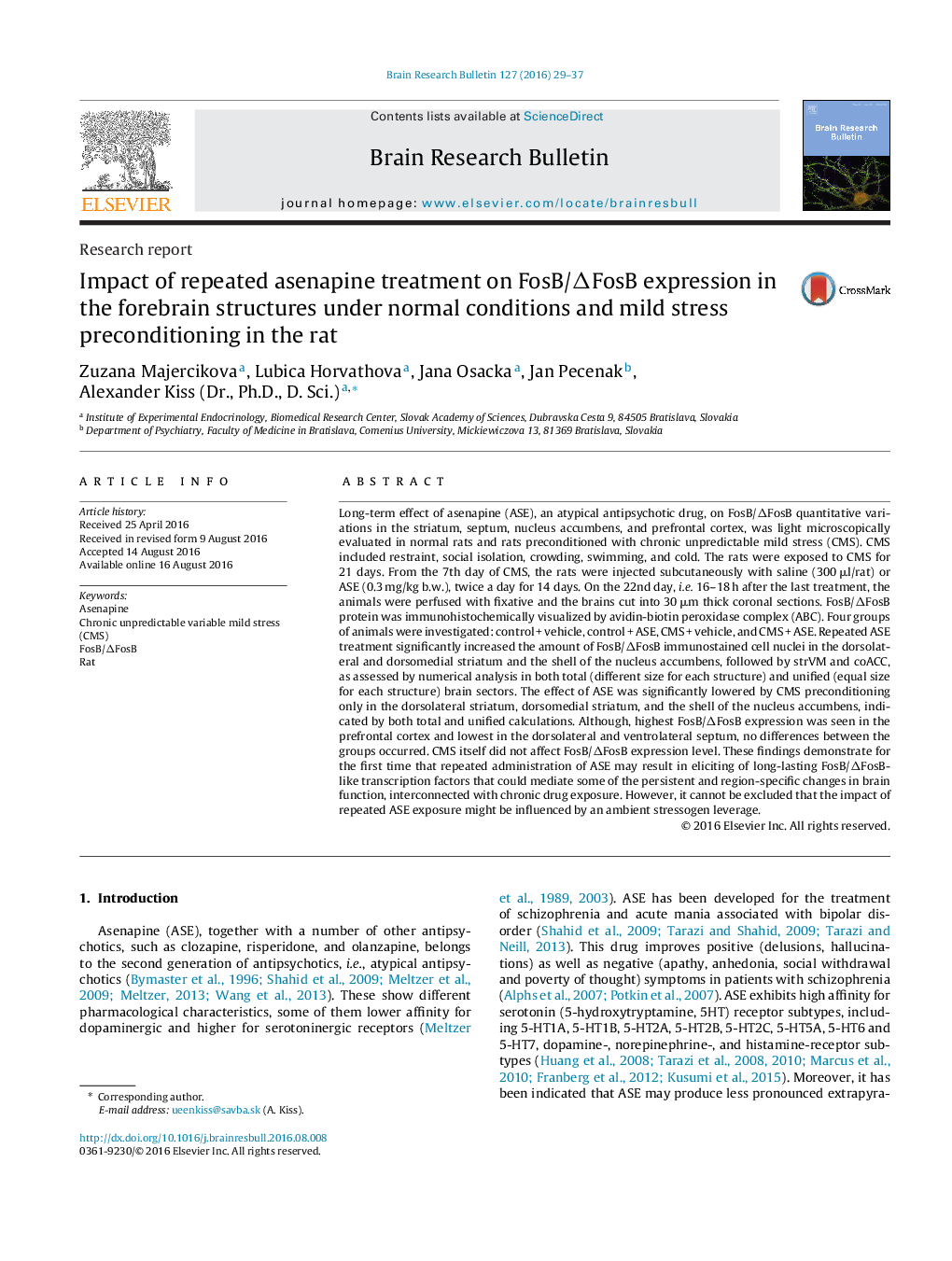| Article ID | Journal | Published Year | Pages | File Type |
|---|---|---|---|---|
| 4318572 | Brain Research Bulletin | 2016 | 9 Pages |
•Repeated ASE increased FosB/ΔFosB in striatum and shell of the nucleus accumbens.•CMS lowered ASE effect on FosB/ΔFosB in striatum and shell of the nucleus accumbens.•CMS itself did not affect FosB/ΔFosB expression in any of structures investigated.•Highest FosB/ΔFosB expression was seen in prefrontal cortex and lowest in septum.•ASE-induced FosB/ΔFosB may take part in brain persisting region-specific changes.
Long-term effect of asenapine (ASE), an atypical antipsychotic drug, on FosB/ΔFosB quantitative variations in the striatum, septum, nucleus accumbens, and prefrontal cortex, was light microscopically evaluated in normal rats and rats preconditioned with chronic unpredictable mild stress (CMS). CMS included restraint, social isolation, crowding, swimming, and cold. The rats were exposed to CMS for 21 days. From the 7th day of CMS, the rats were injected subcutaneously with saline (300 μl/rat) or ASE (0.3 mg/kg b.w.), twice a day for 14 days. On the 22nd day, i.e. 16–18 h after the last treatment, the animals were perfused with fixative and the brains cut into 30 μm thick coronal sections. FosB/ΔFosB protein was immunohistochemically visualized by avidin-biotin peroxidase complex (ABC). Four groups of animals were investigated: control + vehicle, control + ASE, CMS + vehicle, and CMS + ASE. Repeated ASE treatment significantly increased the amount of FosB/ΔFosB immunostained cell nuclei in the dorsolateral and dorsomedial striatum and the shell of the nucleus accumbens, followed by strVM and coACC, as assessed by numerical analysis in both total (different size for each structure) and unified (equal size for each structure) brain sectors. The effect of ASE was significantly lowered by CMS preconditioning only in the dorsolateral striatum, dorsomedial striatum, and the shell of the nucleus accumbens, indicated by both total and unified calculations. Although, highest FosB/ΔFosB expression was seen in the prefrontal cortex and lowest in the dorsolateral and ventrolateral septum, no differences between the groups occurred. CMS itself did not affect FosB/ΔFosB expression level. These findings demonstrate for the first time that repeated administration of ASE may result in eliciting of long-lasting FosB/ΔFosB-like transcription factors that could mediate some of the persistent and region-specific changes in brain function, interconnected with chronic drug exposure. However, it cannot be excluded that the impact of repeated ASE exposure might be influenced by an ambient stressogen leverage.
